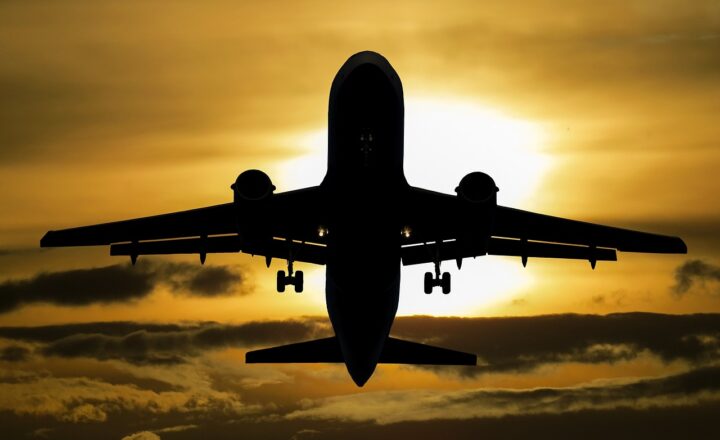The Impact of Aviation on Global Warming and Sustainable Solutions for the Future
November 15, 2024

Aviation plays a crucial role in global connectivity, enabling people to travel and businesses to operate across borders. However, this industry also significantly contributes to global warming, raising concerns about its environmental impact. The aviation sector is responsible for about 2-3% of global CO2 emissions, a figure that is projected to rise without intervention. As policymakers and industry players grapple with this pressing issue, it becomes imperative to explore the ways aviation affects climate change and the sustainable solutions that can be adopted for a more environmentally friendly future.
1. Understanding the Impact of Aviation on Global Warming
The aviation industry contributes to global warming primarily through greenhouse gas emissions. The most pressing of these is carbon dioxide (CO2), along with other pollutants such as nitrogen oxides (NOx), water vapor, and particulate matter. Here’s a deeper look at how aviation contributes to these emissions:
- Direct Emissions: Each flight emits CO2 from the combustion of jet fuel. A single passenger flight can produce a significant amount of greenhouse gases, depending on its distance, aircraft type, and payload.
- Altitude Emissions: The impact of emissions at high altitudes is more severe due to the effects of contrails and NOx emissions, which can lead to the formation of ozone, a potent greenhouse gas in the atmosphere.
- Growth of Air Travel: The exponential growth of air travel increases emissions. Global air travel is expected to double by 2040, leading to a corresponding rise in emissions unless significant measures are implemented.
As we analyze the implications of these emissions, it is vital to understand the long-term effects on the climate:
– **Climate change acceleration:** Higher emissions lead to global warming, resulting in extreme weather patterns and altering ecosystems.
– **Increased air pollution:** The quality of air around major airports degrades, affecting local populations’ health and environment.
2. Finding Sustainable Solutions for Aviation
In light of the environmental challenges posed by aviation, moving towards sustainability is not just an option but a necessity. Here are several technological and policy-based advancements that can help mitigate aviation’s impact on global warming:
a. Sustainable Aviation Fuels (SAFs)
Sustainable aviation fuels, derived from renewable resources such as waste oils and biogas, have the potential to reduce lifecycle greenhouse gas emissions by up to 80%. Airlines like KLM and Lufthansa have already begun experimenting with SAFs in their operations. The introduction of SAFs can significantly lower global aviation emissions if adopted at scale.
b. Enhancing Fuel Efficiency
Aircraft manufacturers are investing heavily in research and development to produce more fuel-efficient engines and aerodynamics that reduce drag. New aircraft designs, such as the Airbus A350 and Boeing 787, feature lightweight materials and state-of-the-art engines that boast lower fuel consumption.
c. Electric and Hybrid Aircraft
Advancements in electric and hybrid propulsion systems offer promising avenues for reducing emissions. Firms like Wright Electric and Pipistrel are spearheading the development of electric planes for short-haul flights, which could revolutionize regional air travel.
d. Optimizing Air Traffic Management
Improved air traffic control systems and technologies can reduce flight times and enhance routing efficiency. Initiatives such as the Single European Sky program aim to streamline air traffic to minimize delays and fuel consumption.
e. Carbon Offsetting Programs
Airlines are also beginning to embrace carbon offset programs that allow passengers to invest in environmental projects that compensate for their flight emissions, such as reforestation and renewable energy initiatives.
3. The Role of Policy in Addressing Aviation Emissions
To ensure sustainable practices in aviation, robust policies must be implemented at international, national, and local levels:
- International Agreements: Initiatives like the Carbon Offsetting and Reduction Scheme for International Aviation (CORSIA) aim to stabilize emissions from international flights at 2020 levels, with the intent for airlines to achieve carbon-neutral growth.
- Government Incentives: Countries can provide incentives for airlines and manufacturers investing in cleaner technologies, thus accelerating the transition to sustainable aviation.
- Regulatory Frameworks: Effective regulations must govern emissions standards, aiming to place limitations on the carbon output of airlines during operation.
4. The Future of Aviation: A Collective Responsibility
The future of aviation depends on a collaborative commitment from stakeholders, including airlines, manufacturers, aviation authorities, and passengers themselves. Public awareness is vital in influencing corporate behavior, pushing industries towards greener practices.
– **Consumer Choice:** Passengers can opt for airlines with sustainable practices, helping to drive the market towards environmentally-friendly choices.
– **Innovative Collaboration:** Partnerships between governments, research institutions, and private sectors can spark innovations that deliver sustainable solutions.
In conclusion, while aviation significantly contributes to global warming, there exists a wealth of opportunities for sustainable solutions that can reshape the industry. By embracing innovative technologies, optimizing practices, and implementing supportive policies, the aviation sector can evolve into a sustainable mode of transport that balances global connectivity with environmental stewardship. The responsibility lies on all fronts—from industry stakeholders to consumers—to contribute to a greener aviation future.
As we navigate this crucial path towards sustainability, it’s essential to remember that action taken today will safeguard the future of our planet for generations yet to come.







